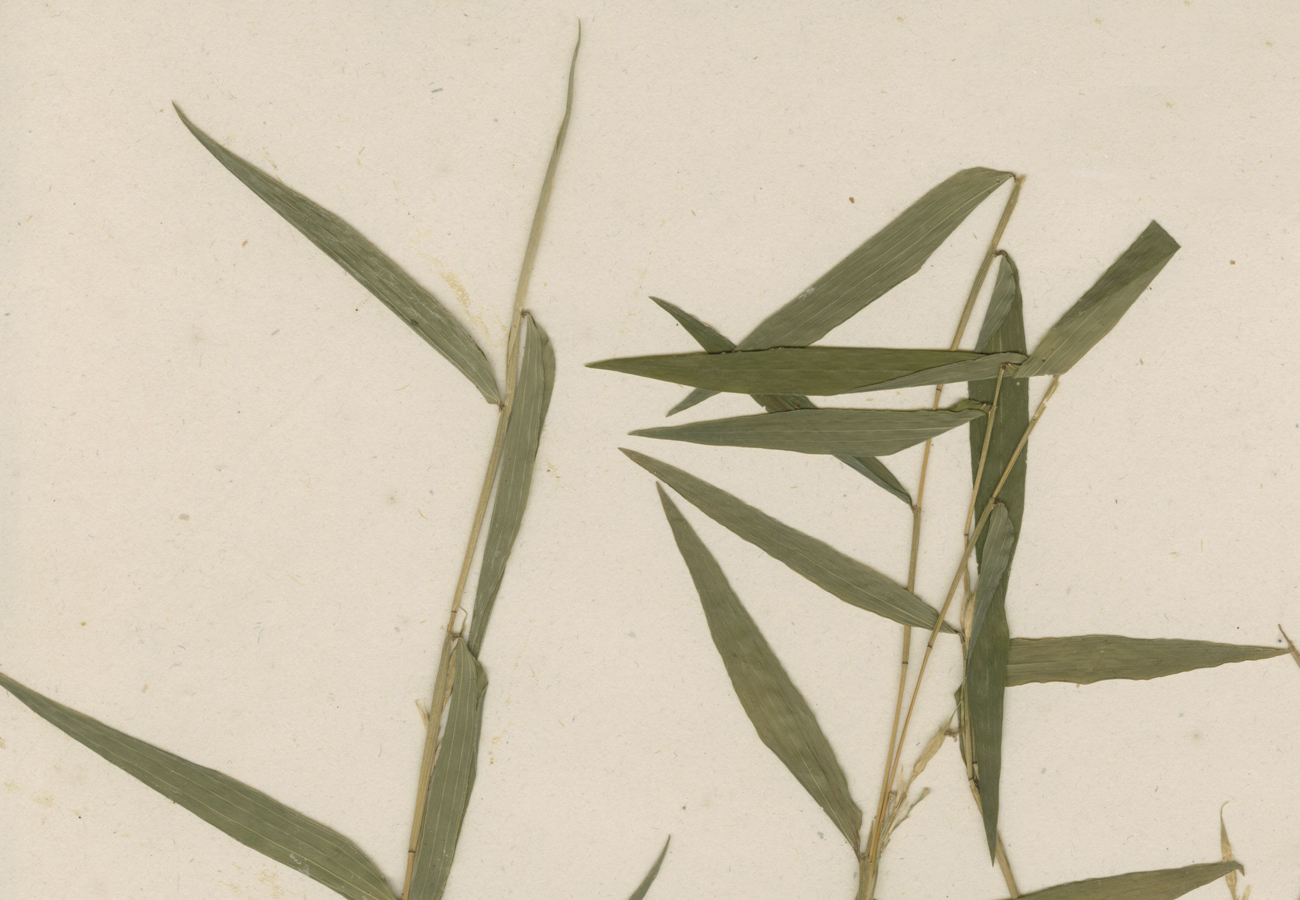Abstract
Olyra Linnaeus (1759: 238) is the best known genus of the herbaceous bamboos, belonging to the tribe Olyreae Kunth ex Spenner (1825: 172), which is composed of the subtribes Buergersiochloinae L.G.Clark & Judz. in Judziewicz & Clark (2007: 311), Parianinae Hackel (1887: 88) and Olyrinae Krombach (1875: 496) (Oliveira et al. 2014, Clark & Oliveira 2018, Ferreira et al. 2019, Oliveira et al. 2020a, Oliveira et al. 2020b). Olyra is the largest genus within the subtribe Olyrinae, including 25 species in its current delimitation, but this estimate will soon be revised since phylogenetic studies evidenced its non-monophyletic nature (Oliveira et al. 2014, Clark & Oliveira 2018, Oliveira et al. 2020a, Oliveira et al. 2020b). All species occur throughout the Neotropics, except O. latifolia Linnaeus (1759: 1261), which is also found in Africa/Madagascar and Sri Lanka (Judziewicz & Clark 2007, Ruiz-Sanchez et al. 2019).
References
<p>Clark, L.G. & Oliveira, R.P. (2018) Diversity and evolution of the New World bamboos (Poaceae: Bambusoideae: Bambuseae, Olyreae). In: Lucas, S. (Ed.) Proceedings of the 11th World Bamboo Congress, Xalapa, Mexico. The World Bamboo Organization, MA, pp. 35–47. Available from: https://worldbamboo.net/wbcxi/keynotes/Clark,%20Lynn%20and%20Patricia%20de%20Oliveira.pdf (accessed 29 January 2021)<br>Döll, J.C. (1877) Gramineae I. Paniceae 2(2B): 34–342. In: von Martius, C.F.P (Ed.) Flora Brasiliensis. F. Fleischer, Monachii et Lipsiae. pp. 314–331.<br>Dórea, M.D.C., Oliveira, R.P. & Welker, C.A.D. (2016) Lectotypifications in Orthoclada (Poaceae, Panicoideae, Zeugiteae). Phytotaxa 246 (2): 159–162. https://doi.org/10.11646/phytotaxa.246.2.9<br>Ferreira, F.M., Oliveira, R.P., Welker, C.A.D., Dórea, M.C., Lima, A.L.C., Oliveira, I.L.C., Santos, F.A.R., Van den Berg, C. & Clark, L.G. (2019) Phylogenetic relationships within Parianinae (Poaceae: Bambusoideae: Olyreae) with emphasis on Eremitis: evidence from nuclear and plastid DNA sequences, macromorphology, and pollen ectexine patterns. Molecular Phylogenetics and Evolution 139: 106541. https://doi.org/10.1016/j.ympev.2019.106541<br>Hackel, E. (1887) Echte Gräser. In: Engler, A. & Prantl, K. (Eds.) Die Natürlichen Pflanzenfamilien 2 (2). W. Engelmann, Leipzig, pp. 1–97.<br>Hackel, E. (1912) Gramineae novae. IX. Repertorium novarum specierum regni vegetabilis 11: 18–30. https://doi.org/10.1002/fedr.19120110104<br>JACQ consortium (2004 onwards) Virtual Herbaria Website. Available from: https://www.jacq.org/ (accessed 29 January 2021)<br>Judziewicz, E.J., Soreng, R.J., Davidse, G., Peterson, P.M., Filgueiras, T.S. & Zuloaga, F.O. (2000) Catalogue of New World grasses (Poaceae): I. Subfamilies Anomochlooideae, Bambusoideae, Ehrhartoideae, and Pharoideae. Contributions from the United States National Herbarium 1–128. [https://www.jstor.org/stable/23493177]<br>Judziewicz, E.J. & Clark, L.G. (2007) Classification and biogeography of new world grasses: Anomochlooideae, Pharoideae, Ehrhartoideae, and Bambusoideae. Aliso: A Journal of Systematic and Evolutionary Botany 23: 303–314. https://doi.org/10.5642/aliso.20072301.25<br>Krombach, J.H.W. (1875) Flore du grand-duché de Luxembourg. Plantes Phanérogames. Joris, Luxembourg, 564 pp. https://doi.org/10.5962/bhl.title.9973<br>Linnaeus, C. (1759) System naturae per regna tria naturae, secundum classes, ordines, genera, species, cum characteribus, differentiis, synonymis, locis, Editio decima, reformata, 2. Impensis Direct. Laurentii Salvii, Holmiae, 1384 pp. https://doi.org/10.5962/bhl.title.542<br>McNeill, J. (2014) Holotype specimens and type citations: general issues. Taxon 63: 1112–1113. https://doi.org/10.12705/635.7<br>Oliveira, I.L.C., Matos, A.O., Silva, C., Carvalho, M.L.S., Tyrrell, C.D., Clark, L.G. & Oliveira, R.P. (2020a) Delving deeper into the phylogenetics of the herbaceous bamboos (Poaceae, Bambusoideae, Olyreae): evaluation of generic boundaries in the Parodiolyra/Raddiella clade uncovers a new genus. Botanical Journal of the Linnean Society 192: 61–81. https://doi.org/10.1093/botlinnean/boz049<br>Oliveira, R.P., Silva, C., Welker, C.A.D., Dórea, M.D., Oliveira, I.L.C., Vieira, J.P.S., Leite, R.B. & Clark, L.G. (2020b) Reinterpreting the phylogenetic position, systematics and distribution of the Raddia-Sucrea lineage (Poaceae, Olyrinae), with a new monotypic and endangered herbaceous bamboo genus from Brazil. Botanical Journal of the Linnean Society 192: 34–60. https://doi.org/10.1093/botlinnean/boz048<br>Oliveira, R.P., Costa Dórea, M. & Welker, C.A.D. (2016) Lectotypification of Arundo roraimensis, the basionym of Cortaderia roraimensis (Poaceae—Danthonioideae). Phytotaxa 244 (3): 298–300. https://doi.org/10.11646/phytotaxa.244.3.6<br>Oliveira, R.P., Clark, L.G., Schnadelbach, A.S., Monteiro, S.H., Borba, E.L., Longhi-Wagner, H.M. & van den Berg, C. (2014) A molecular phylogeny of Raddia and its allies within the tribe Olyreae (Poaceae, Bambusoideae) based on noncoding plastid and nuclear spacers. Molecular Phylogenetics and Evolution 78: 105–117. https://doi.org/10.1016/j.ympev.2014.04.012<br>Oliveira, R.P., Longhi-Wagner, H.M. & Renvoize, S.A. (2009) Some lectotypifications in the tribe Olyreae (Poaceae: Bambusoideae). Kew Bulletin 64: 735–738. https://doi.org/10.1007/s12225-009-9154-y<br>Prado, J., Hirai, R.Y. & Moran, R.C. (2015) Proposals concerning inadvertent lectotypifications (and neotypifications). Taxon 64: 651. https://doi.org/10.12705/643.29<br>Reis, P.A., Dórea, M.C. & Oliveira, R.P. (2016) Lectotypification of Panicum fluminense and Panicum pseudoryzoides, two names related to Acroceras (Poaceae, Paniceae). Phytotaxa 263 (1): 63–67. https://doi.org/10.11646/phytotaxa.263.1.7<br>Rodrigues, R.S., Costa Dórea, M., de Sousa Filgueiras, T. & De Oliveira, R.P. (2016) Lectotypification of Panicum salzmannii, basionym of Isachne salzmannii (Poaceae, Micrairoideae). Phytotaxa 246 (2): 155–158. https://doi.org/10.11646/phytotaxa.246.2.8<br>Ruiz-Sanchez, E., Sosa, V., Ortiz-Rodriguez, A.E. & Davidse, G. (2019) Historical biogeography of the herbaceous bamboo tribe Olyreae (Bambusoideae: Poaceae). Folia Geobotanica 54: 177–189. https://doi.org/10.1007/s12224-019-09342-7<br>Soderstrom, T.R. & Zuloaga, F.O. (1989) A revision of the genus Olyra and the new segregate genus Parodiolyra (Poaceae: Bambusoideae: Olyreae). Smithsonian Contributions to Botany 69: 1–79. <br>https://doi.org/10.5479/si.0081024X.69 <br>Soderstrom, T.R. & Calderón, C.E. (1979) Arberella (Poaceae: Bambusoideae): a new genus from tropical America. Brittonia 31: 433–445. https://doi.org/10.2307/2805992<br>Spenner, F.C.L. (1825) Tribus VII, Olyreae Kunth. Flora friburgensis et regionum proxime adjacentium. Friburgi Brisgoviae 1: 172–173. https://doi.org/10.5962/bhl.title.6634<br>Thiers, B. (2021[onwards]) Index Herbariorum: a global directory of public herbaria and associated staff. New York Botanical Garden’s Virtual Herbarium. Available from: http://sweetgum.nybg.org/science/ih/ (accessed 29 January 2021)<br>Turland, N.J., Wiersema, J.H., Barrie, F.R., Greuter, W., Hawksworth, D.L., Herendeen, P.S., Knapp, S., Kusber, W.-H., Li, D.-Z., Marhold, K., May, T.W., McNeill, J., Monro, A.M., Prado, J., Price, M.J. & Smith, G.F. (2018) International Code of Nomenclature for algae, fungi, and plants (Shenzhen Code) adopted by the Nineteenth International Botanical Congress Shenzhen, China, July 2017. Regnum Vegetabile 159. Koeltz Botanical Books, Glashütten, 254 pp. https://doi.org/10.12705/Code.2018</p>


